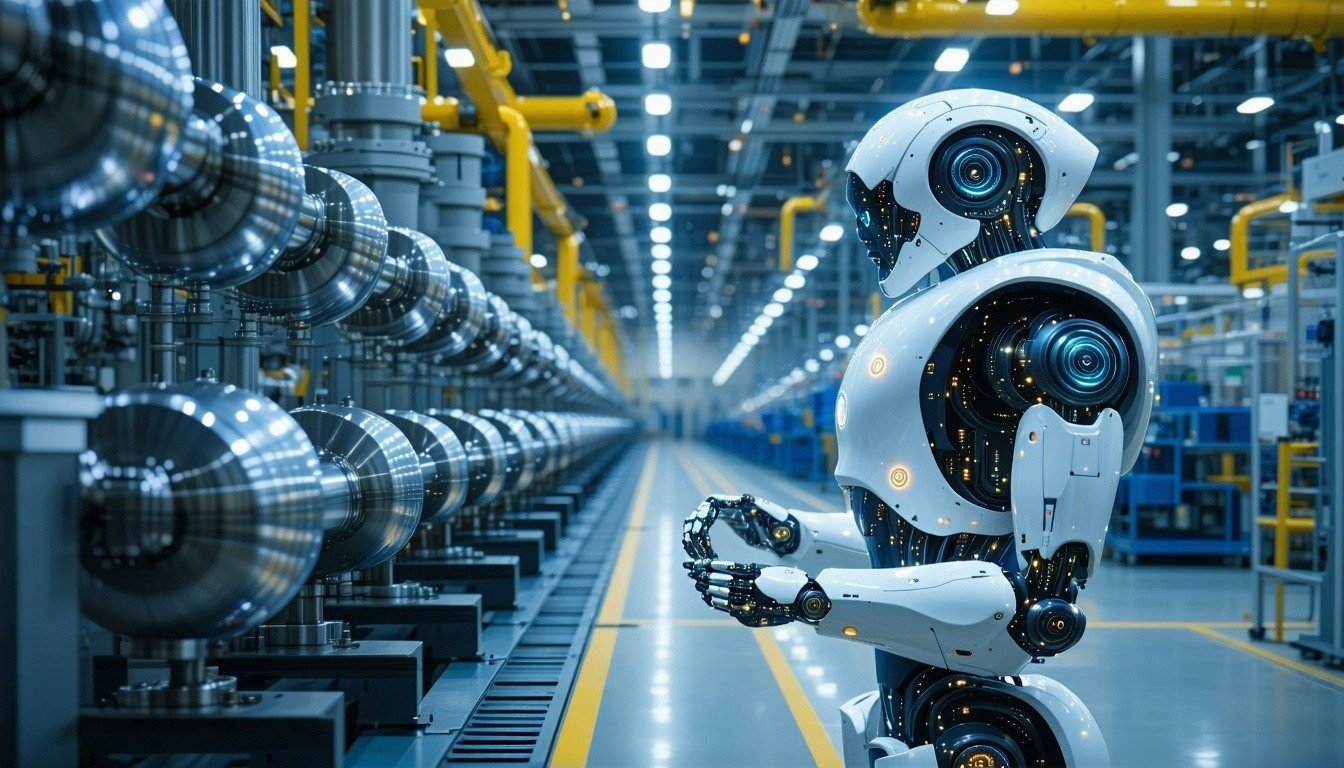In an ideal world, industrial and manufacturing firms could simply focus on producing goods and maximizing their profits through innovation. However, that’s not the world we live in, and they face several manufacturing challenges that they have little to no control over. Firms can prepare to act upon them by first identifying and evaluating the most significant issues. From there, strategic steps can be taken to ensure that production plants and supply chains are equipped with the technologies needed to build operational resiliency. With this post, I’ll walk you through five of the most highly impactful manufacturing challenges to be aware of in 2023 and pinpoint which vertical markets experience the greatest inconvenience from each of them.
Below is the video version of this topic, which comes from the ABI Research YouTube account.
Recently Published: Manufacturing Trends 2025
Broader Economy
As manufacturers target various geographic regions, the broader economy can have a major impact on manufacturers’ production and supply chain capabilities. Fluctuations in Gross Domestic Product (GDP), national income, exchange rates, unemployment, wage levels, and interest rates can create problems for commercial aspirations and operations. When gauging the severity of this challenge, manufacturers must consider how global economic factors impact their input costs, their ability to pass rising costs on to customers, and the backlash of hypothetical trade disputes and heightened tensions between countries.
Manufacturing Sectors Most Impacted by This Challenge
The broader economy affects business executives in the Food Manufacturing and Consumer Goods (FMCG) sector the most, with a score of 8.0/10 in ABI Research’s evaluation. The main problems for FMCG companies are rising wage levels and inflation resulting in higher product prices and less consumer demand, as well as exchange rates affecting the costs of supplies.
Regulatory Shifts
Both national and local regulations are constantly changing, making it imperative that industrial manufacturing companies consistently keep up to date with policies. For example, there are nearly 298,000 restrictions affecting manufacturers, according to the National Association of Manufacturers (NAM). More regulatory policies are always being added, which adds greater difficulty in legally producing goods.
In the United States, manufacturers need to be wary of various federal and state laws. In Asia-Pacific, it’s the lifting of travel restrictions, and in Europe, the focus for manufacturers is the transport of goods between the European Union (EU) and the United Kingdom. These issues spread their tentacles to various trade disputes, operational profitability, and Environmental, Social, and Governance (ESG) positioning.
Manufacturing Sectors Most Impacted by This Challenge
Executives working in the oil & gas and pharmaceutical industries feel the most impact from changing regulations, scoring 9.5/10. For oil & gas firms and pharma companies, complying with safety and track & trace regulations is of utmost importance.
Trade Disputes
As the United States and China trade blows regarding trade restrictions (notably in the semiconductor manufacturing space), this trend adds uncertainty for manufacturing firms with a global footprint. These trade disputes necessitate manufacturers to question the influence on their operations of local economic conditions, applicable regulations, reshoring possibilities, supply chain costs, and talent availability in the markets where they have a direct presence.
Manufacturing Sectors Most Impacted by This Challenge
Oil & gas producers feel the ripple effects of trade disputes the most, with an impact score of 9.0/10 for operational decision makers in this space.
State-To-State Conflict
The next high-impact manufacturing challenge in 2023 is state-to-state conflict. As the war in Ukraine has demonstrated, industrial manufacturing firms have had to change sourcing methods and adhere to sanctions, while managing higher input costs. While the Russia-Ukraine conflict was largely unexpected, manufacturers can take the steps now to build resiliency in the event of a potential clash between China and Taiwan, or anywhere else tensions could flare up and cause problems for manufacturing operations. Therefore, manufacturers need to track disputes and perform scenario planning should a conflict break out near their facilities or those of key suppliers.
Manufacturing Sectors Most Impacted by This Challenge
Conflict affects every manufacturing sector at least moderately, but the semiconductor industry has the greatest issue with it—scoring 9.0/10 in ABI Research’s assessment for business executives. This is because Taiwan is a bottleneck for the supply of the most sophisticated semiconductors. A potential Taiwan invasion would have earth-shattering repercussions on the global chipset supply.
Chart 1: Semiconductor Revenue by Region and Key Country (US$ Millions) (Source: ABI Research)

An Aging Workforce
The populations in North America, Europe, and Japan are some of the oldest in the world, which makes hiring talent a bigger challenge for manufacturers. For example, a recent survey from the Manufacturers Association found that 82% of recent retirees from the manufacturing industry cited age or health-related concerns as the reason for leaving the workforce. The main issue now is keeping a manufacturing firm appealing in the eyes of skilled workers as a large exodus from industry unfolds. Moreover, digital transformation technologies, such as exoskeletons, Augmented Reality (AR)-based employee training, and collaborative robots, will be key to increasing production volume with fewer staff.
Manufacturing Sectors Most Impacted by This Challenge
An aging workforce is a combination of demographic and talent availability issues. While operational decision makers at heavy equipment manufacturers are hurt the most by talent shortages (6.0/10 scores), for demographics, executives for automakers are the most impacted with a score of 7.0/10.
Time to Tackle Manufacturing Challenges Head-on
The evolving landscape of manufacturing brings forth various challenges and shifting expectations. As manufacturers aim to maximize profitability in the face of a storm of operational issues, strategic collaboration and practical technology investments are high priorities. And this all comes at a time when industrial manufacturing firms must adhere to ever-stricter ESG guidelines in order to stay in the good graces of investors and customers alike.
To grasp the current state of manufacturing, you can download ABI Research’s The Macro and Micro Factors Impacting Industrial and Manufacturing Firms and How Technologies Can Help Tackle Them presentation. This research adds greater context to the severity of manufacturing challenges by:
- Scoring the impact of challenges when combined with one another.
- Assessing the severity of each challenge in every major manufacturing vertical market.
- Evaluating the impact on industrial manufacturing firms' executives and operational decision makers.
- Pinpointing the problems that plague each manufacturing vertical market.
- Highlighting which technologies are best suited to address each manufacturing challenge.
Get the presentation by clicking on the graphic below.





